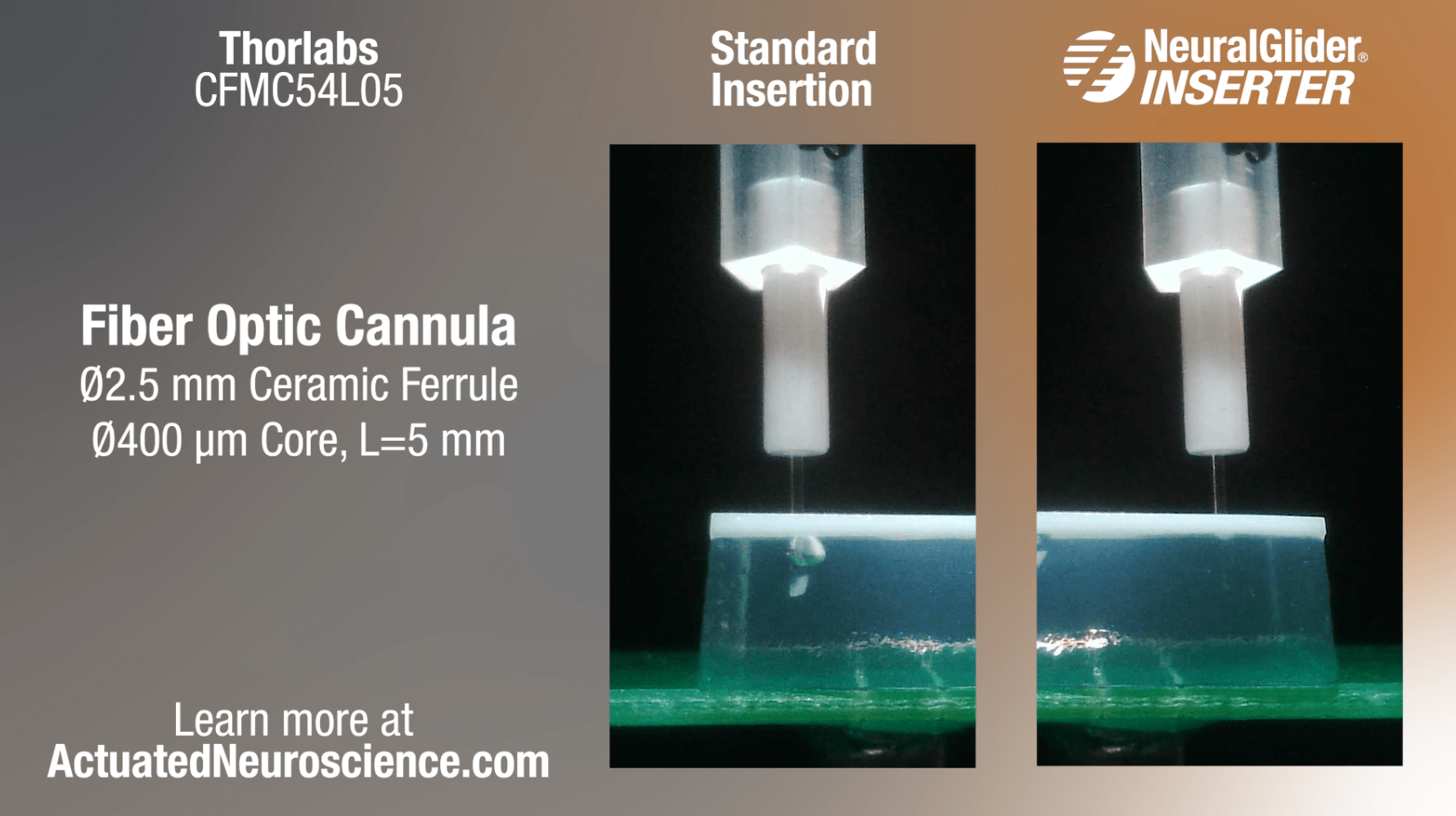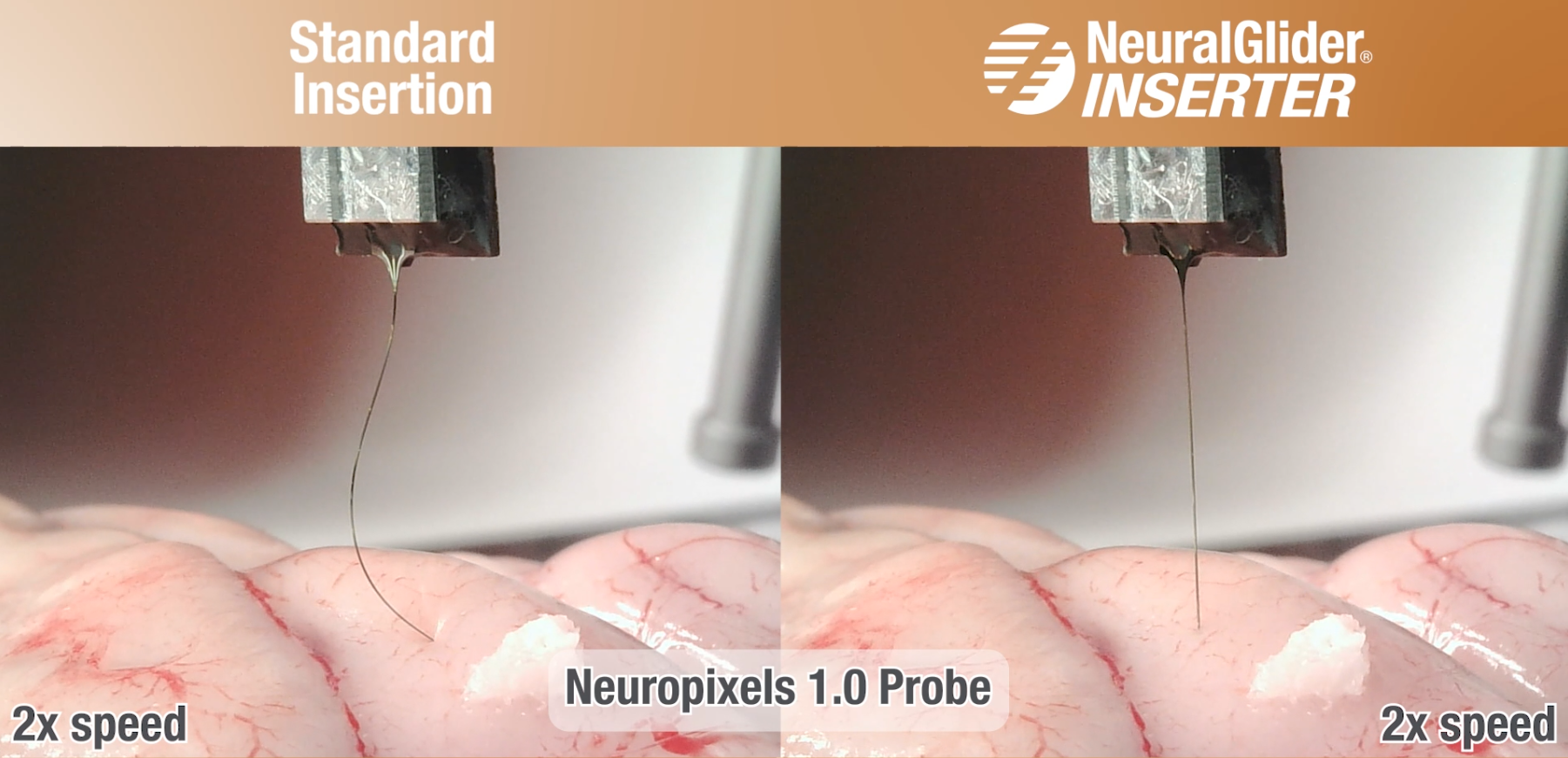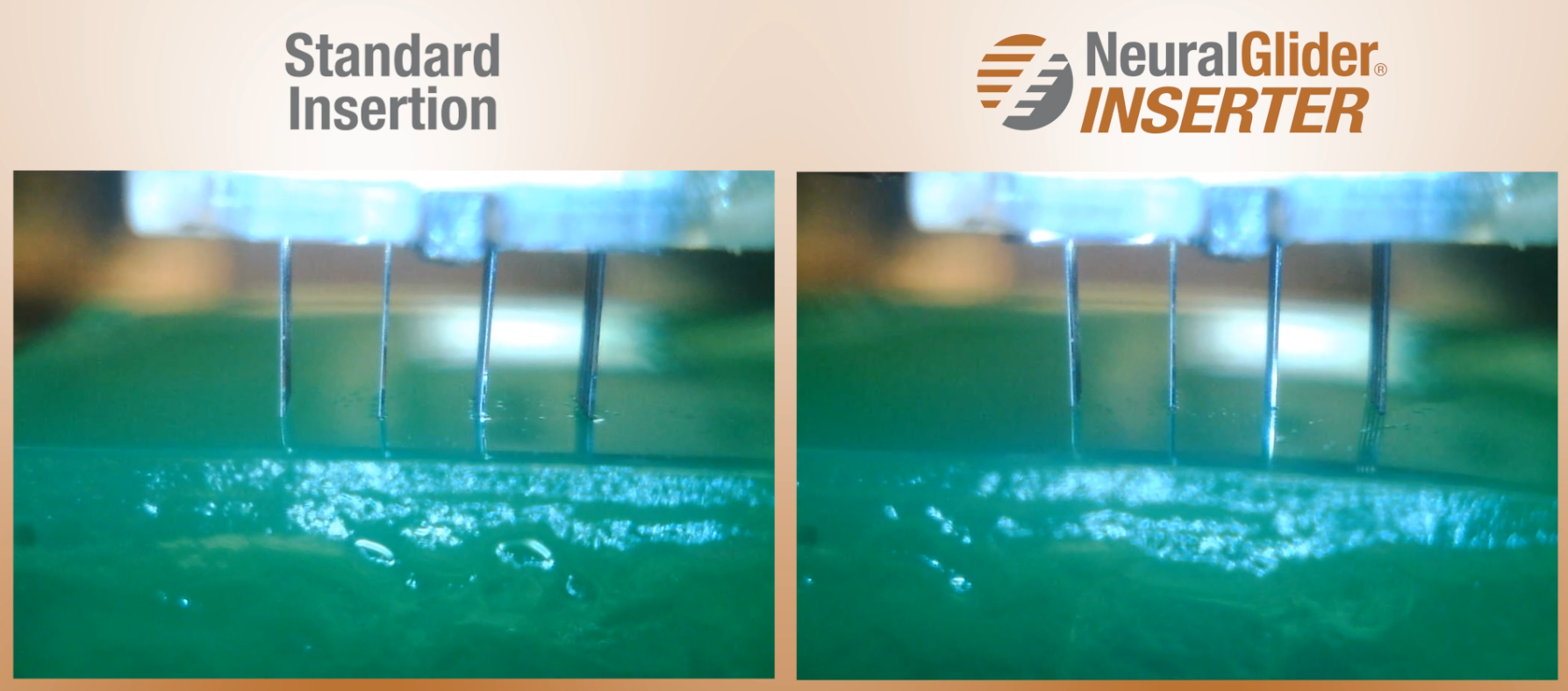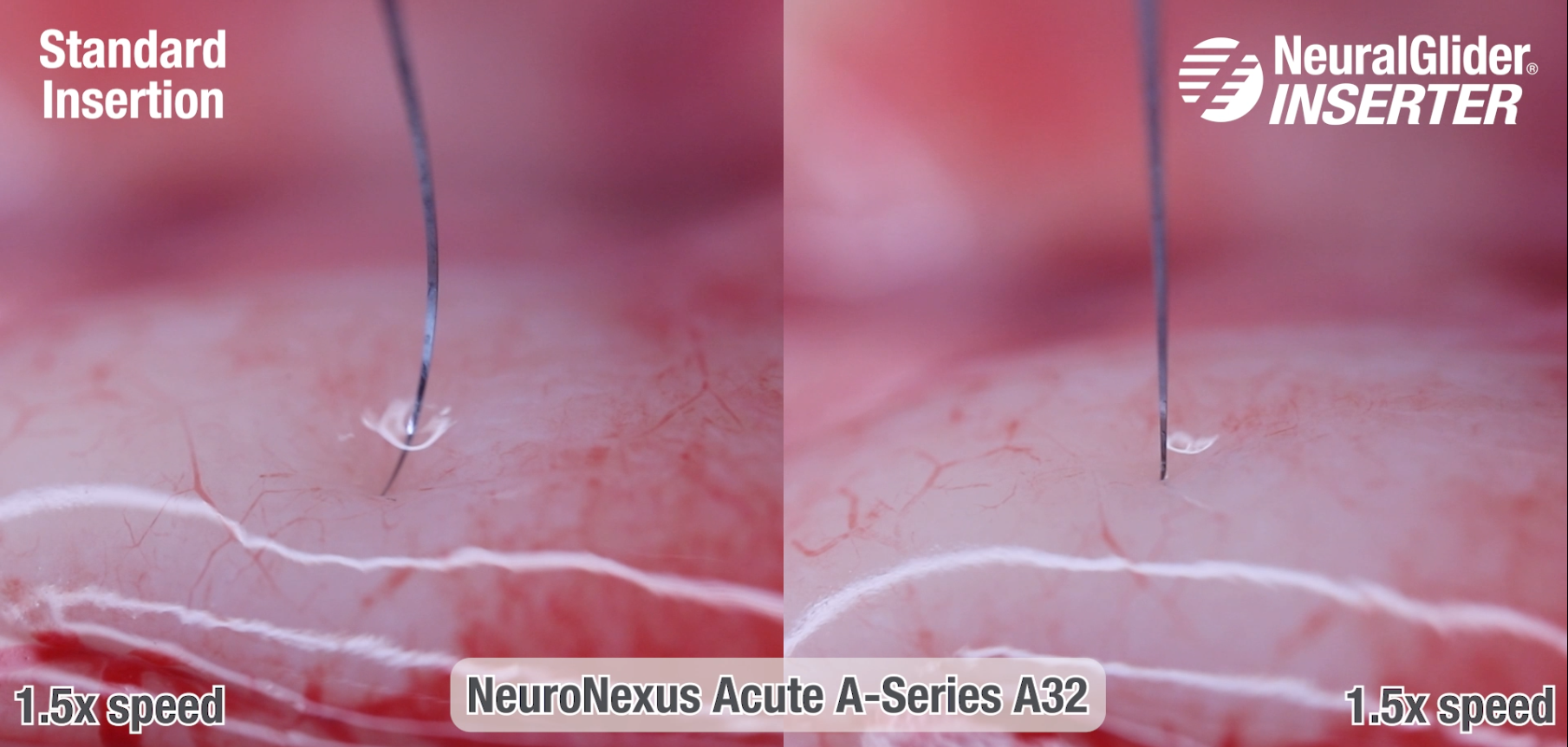
The NeuralGlider Inserter uses ultrasonic micro-vibration to reduce forces and resultant dimpling during neural implant insertions. The standard system includes a linear motor for precise, automated control of insertion depth and speed, an Actuator for variable-power vibration of the implant, and a low-profile microscope camera to enable detailed view of the surgical field. The NeuralGlider Inserter mounts to a standard stereotaxic frame.
Unmatched Insertion Performance
Our Innovation, Your Research Breakthroughs

Recording of pig neuronal activity in the comparative context of the awake human brain. A. Dobariya, et.al. Pascual Lab, UT Southwestern
The effect of a Mn(III)tetrakis (4-benzoic acid) porphyrin (MnTBAP) coating on the chronic recording performance of planar silicon intracortical microelectrode arrays. A.G. Hernandez-Reynoso, et.al. Capadona Lab, Case Western University
Planar amorphous silicon carbide microelectrode arrays for chronic recording in rat motor cortex. J.R. Abbott, et.al. Cogan Lab, UT Dallas
“The NeuralGlider Inserter helped us to get a better outcome for our DBS-fMRI study. The micro-vibration really reduced impact resistance during implantation of flexible probe as well as chronic glial cell formation, so that we could get higher accuracy of electrode placement and reliable stimulation-induced hemodynamic responses from fMRI.”
Sung-Ho Lee, Ph.D., The University of North Carolina at Chapel Hill
“The pia mater was left intact to minimize hemorrhaging due to its dense vasculature, which could be disrupted during electrode insertion. Thus, ultrasonic micro-vibration [NeuralGlider] was used during insertion for pia mater penetration of a-SiC microelectrode arrays, which was needed due to the thin and flexible characteristics of ultrasmall a-SiC electrode arrays.”
Aksharkumar Dobariya, Tarek Y. El Ahmadieh, Levi B. Good, Ana G. Hernandez-Reynoso, Vikram Jakkamsetti, Ronnie Brown, Misha Dunbar, Kan Ding, Jesus Luna, Raja Reddy Kallem, William C. Putnam, John M. Shelton, Bret M. Evers, Amirhossein Azami, Negar Geramifard, Stuart F. Cogan, Bruce Mickey & Juan M. Pascual

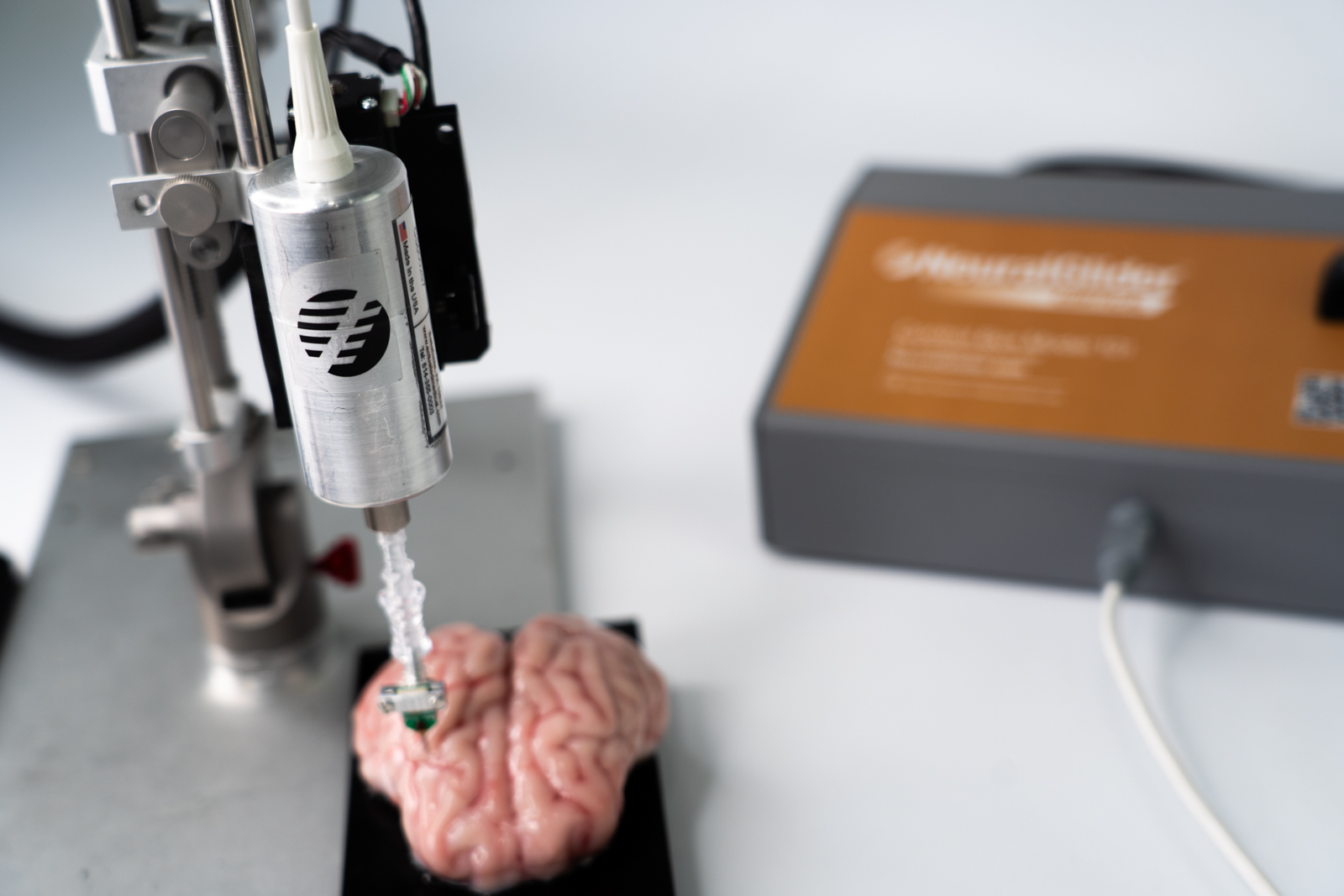

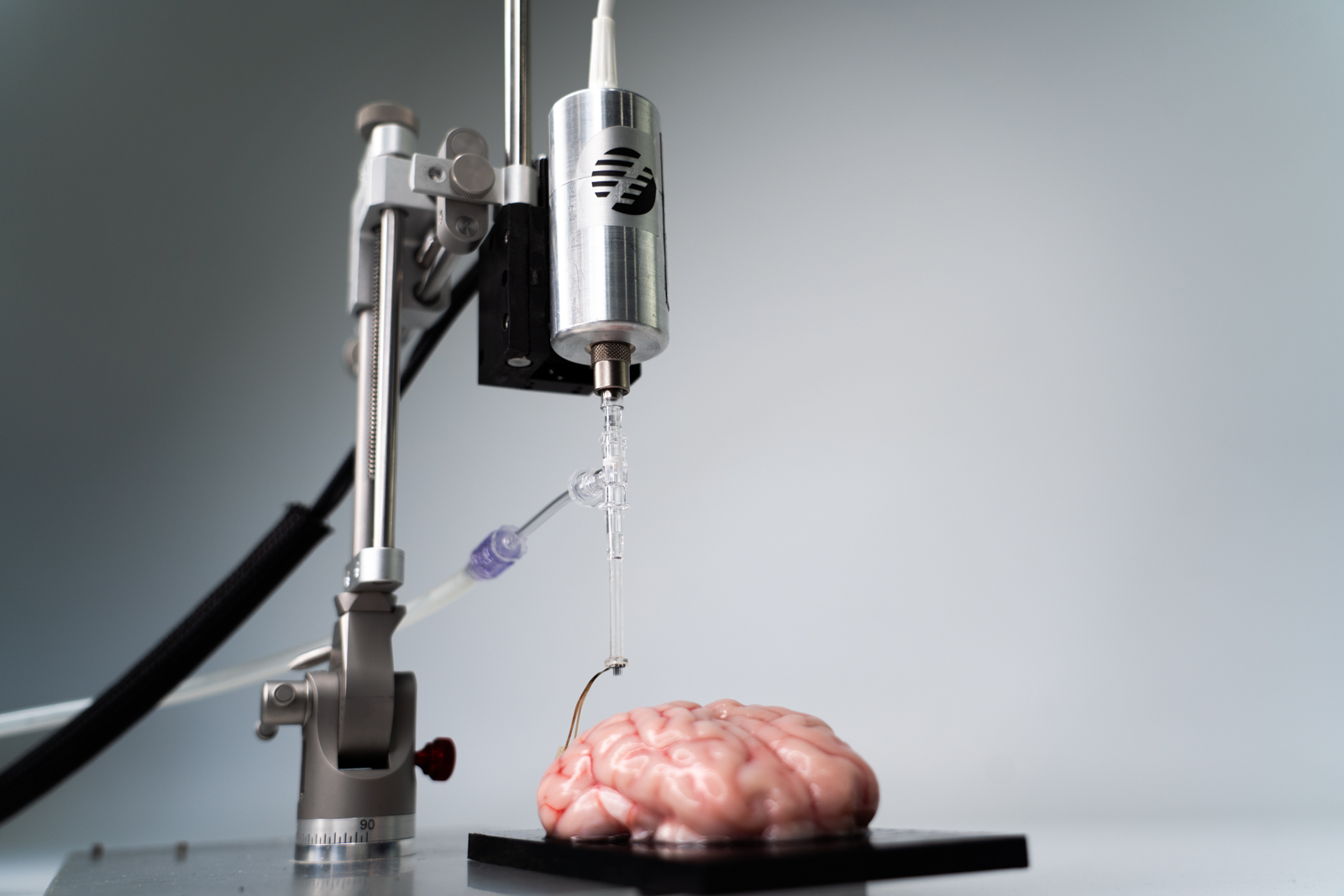
NIH SBIR Grant R44NS105500 Subawardees
University of Pittsburgh
University of North Carolina at Chapel Hill
Carnegie Mellon University
Tulane University
Lawrence Livermore National Laboratory
Pennsylvania State University
These works are/were partially supported by the National Institutes of Health National Institute of Neurological Disorders and Stroke Award No. R44NS105500, National Institute on Drug Abuse Award No. R43DA051265 and the Defense Advanced Research Projects Agency Biological Technologies Office Electrical Prescriptions Award No. HR0011-16-C-0094. The views, opinions, and/or findings contained in this work are those of Actuated Medical, Inc. and should not be construed as an official government position, policy, or decision unless so designated by other documentation.



